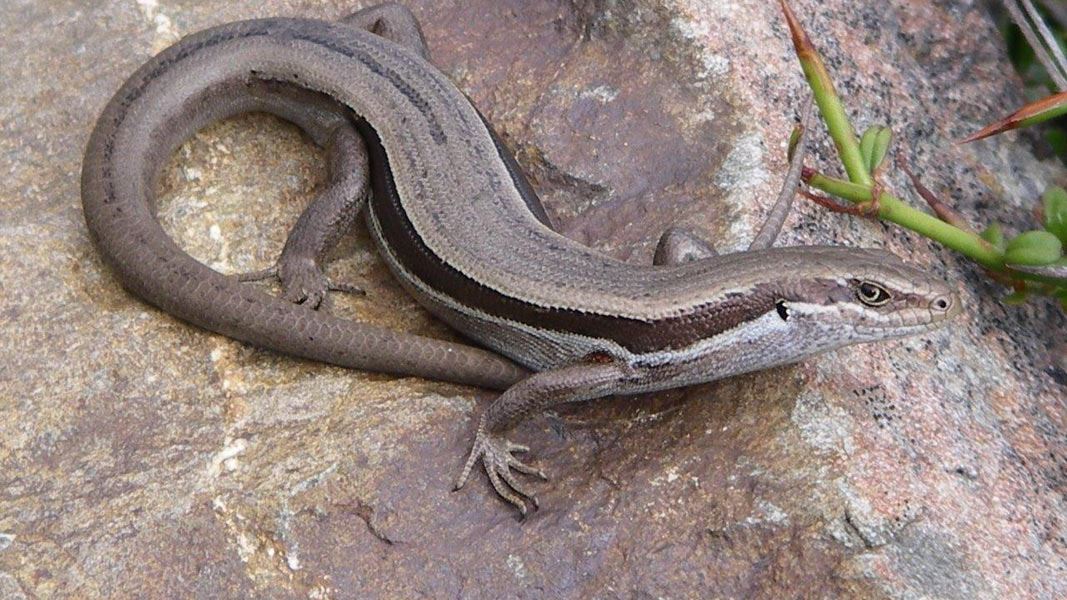
Introduction
This rare species was discovered in 2004 already in a critical state.Population: (2017) <250 individuals
National status: Endemic
Conservation status: Threatened–Nationally Critical
Did you know
White-bellied skinks have a specialised and modified scale over their eye lids that help shade the harsh high-country sun; serving a similar function to a cap or sun visor
White-bellied skink conservation
The white-bellied skink (Oligosoma hoparatea) is also known as the Rangitata skink or pukuma. The scientifiic name comes from the Maori word hōparatea, translating to white-bellied.
It was discovered in the 2004 and was probably already in a critical state. Management was delayed by uncertainty over the species’ range and numbers.
Very little is known about this species and its life history. They are generally absent from suitable habitats that is apparently unmodified.
The skinks are scree loving and have probably only ever been found in the high country. The full range of the species is not well understood and they are currently known only from the mountains of inland mid Canterbury.
Scientists expect mice to be a significant predator, but rats, mustelids and cats will also be preying upon skinks.
Our work
In the early years after discovery, research was focussed on understanding their preferred habitats, which has ultimately enabled more targeted surveys. With help from Auckland Zoo's Conservation Fund, more recent surveys have confirmed that the species is genuinely rare at known sites rather than just cryptic (difficult to find).
Research is being undertaken to identify distribution, life history, and rate and causes of decline to enable the development of methods to recover the species.
You can help
Report all lizards sightings to the local DOC office. Any records of lizards are important and help build our understanding of lizard distribution. Significant discoveries are often made by following up observations from locals.
Of note there are very few records of lizards from the north Canterbury high country.